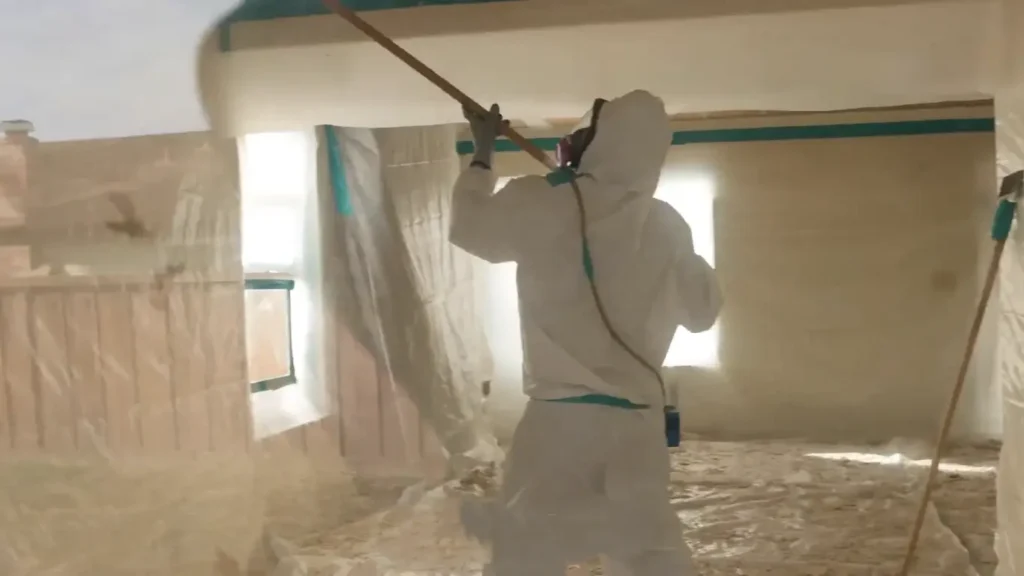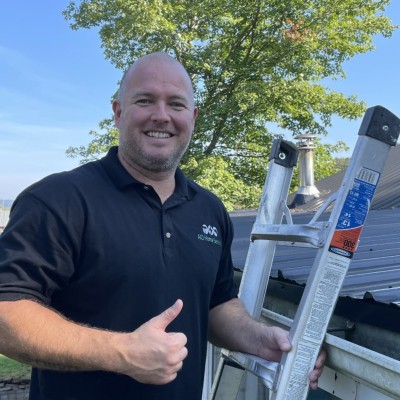Asbestos abatement is a process critical to ensuring the safety and well-being of individuals exposed to asbestos. While asbestos was once widely used in building materials due to its durability and resistance to heat, it has since been found to pose significant health risks, including lung cancer, asbestosis, and mesothelioma.
Certified professionals play an essential role in safely handling, removing, and disposing of asbestos-containing materials (ACMs). This comprehensive article will delve into the importance of certified professionals in asbestos abatement, provide factual details about asbestos dangers, outline the abatement process, and emphasize why only trained professionals should handle this hazardous material.
Understanding Asbestos Abatement
Asbestos abatement is the process of safely removing or containing asbestos materials to prevent exposure to harmful fibers. This is crucial because asbestos, once commonly used in construction, can pose serious health risks when its fibers are inhaled, leading to lung diseases like asbestosis and mesothelioma.
Abatement requires trained professionals who follow strict safety protocols, including sealing off areas, wearing protective gear, and using specialized equipment to handle hazardous material.
The Importance of Professional Abatement Services
Professional abatement services are essential for ensuring the safe removal of asbestos and other hazardous materials. These services are staffed by trained and certified experts who understand the complexities and dangers associated with asbestos exposure.

They employ specialized techniques and equipment to minimize risks during the abatement process, protecting both workers and building occupants. Additionally, professional services adhere to local regulations and guidelines, ensuring compliance and reducing liability for property owners.
Engaging experts not only guarantees effective remediation but also provides peace of mind, knowing that health and safety are prioritized throughout the abatement process.
Professionally Safe Asbestos Abatement with Hathaway Environmental!
Hathaway Environmental is committed to providing professionally safe asbestos abatement services that prioritize health and safety above all. With a team of certified experts, we employ industry-leading techniques and state-of-the-art equipment to manage asbestos removal and containment effectively.
Our rigorous safety protocols ensure minimal disruption to your environment while protecting occupants from exposure to harmful fibers. From thorough assessments to compliant removal processes, Hathaway Environmental guarantees a comprehensive approach that meets all regulatory standards. Trust us to safeguard your property and well-being through our reliable and efficient asbestos abatement services.
Asbestos and Its Health Risks
Asbestos is a naturally occurring mineral made of flexible fibers resistant to heat, electricity, and corrosion. It was extensively used in construction, insulation, and fireproofing materials during the 20th century. However, the material was eventually found to be extremely hazardous to health. When asbestos-containing materials are disturbed or damaged, they release fine fibers into the air. Inhalation of these fibers can lead to severe respiratory diseases.
Asbestos-Related Diseases
- Mesothelioma: A cancer that affects the lining of the lungs, chest cavity, or abdomen.
- Asbestosis: A chronic lung condition that causes shortness of breath and scarring of lung tissue.
- Lung Cancer: Long-term asbestos exposure is linked to an increased risk of lung cancer.
The latency period of these diseases can be decades long, meaning individuals exposed to asbestos may not show symptoms until many years after exposure.
Why Asbestos Abatement Is Necessary
The removal or encapsulation of asbestos is necessary to prevent harmful exposure. Asbestos abatement ensures that asbestos-containing materials (ACMs) are handled, removed, and disposed of safely to avoid contaminating the environment and protecting human health. DIY asbestos removal or handling by untrained individuals is not only dangerous but often illegal.
Statistics on Asbestos Exposure
- According to the World Health Organization (WHO), approximately 125 million people globally are exposed to asbestos in their workplace.
- The Environmental Protection Agency (EPA) in the U.S. estimates that there are around 20 million homes and buildings that contain ACMs.
- Around 90,000 people die annually from asbestos-related diseases.
Certified Professionals in Asbestos Abatement: Why Certification Matters?
Certified asbestos professionals are specifically trained to identify, handle, and remove asbestos in a safe and regulated manner. Certification involves undergoing rigorous training programs that adhere to governmental safety standards.
Key Certifications for Asbestos Professionals:
- EPA Asbestos Abatement Worker Certification: Professionals must complete a training program certified by the EPA and pass an exam.
- OSHA Asbestos Safety Certification: Ensures adherence to workplace safety standards.
- AHERA (Asbestos Hazard Emergency Response Act) Certification: Required for individuals handling asbestos in schools and public buildings.
Certified professionals are knowledgeable about the following:
- Safe handling and Disposal of ACMs
- How to prevent asbestos exposure to themselves and others
- Proper use of personal protective equipment (PPE)
The Asbestos Abatement Process
Asbestos abatement is a multi-step process that requires thorough planning, execution, and follow-up. Below are the main steps certified professionals follow during asbestos abatement:
Inspection and Identification
Certified professionals begin by inspecting the property to identify any ACMs. They may use specialized testing kits or rely on laboratory analysis of material samples. This step ensures that the location and amount of asbestos are accurately determined.
Site Preparation
The area where asbestos abatement will occur is sealed off to prevent fibers from escaping into other parts of the building. Workers must wear PPE, such as respirators and protective clothing. Negative air pressure machines are often used to ensure asbestos fibers do not leave the contained area.
Removal and Containment
Certified professionals carefully remove asbestos materials, ensuring minimal disturbance to prevent fiber release. The materials are kept wet to reduce the Risk of airborne asbestos, and they are placed in special containers for safe transportation.
Disposal
Asbestos waste must be transported to certified hazardous waste disposal sites. Certified professionals follow strict protocols during transport to avoid contamination.
Regulatory Requirements for Asbestos Abatement

Asbestos abatement is highly regulated to protect both workers and the public. Several laws govern asbestos removal in most countries. In the United States, agencies such as the EPA and Occupational Safety and Health Administration (OSHA) set these standards.
Regulations to Follow
- EPA’s NESHAP (National Emission Standards for Hazardous Air Pollutants): Outlines asbestos control measures.
- OSHA’s Asbestos Standard (29 CFR 1926.1101): Covers safety requirements for construction workers handling asbestos.
- State-specific laws: These can vary but often require additional local certifications.
Failure to adhere to these regulations can result in significant fines and legal action.
Key Equipment and Tools Used in Asbestos Abatement
Certified professionals use a range of tools and equipment to ensure the safe removal and containment of asbestos. Some of these include:
- HEPA vacuums: Used to clean up dust and debris during and after removal.
- Negative air machines: Create negative air pressure to prevent asbestos from escaping.
- Glove bags: Enclose ACMs during removal for small-scale jobs.
- Air monitoring equipment: Ensures asbestos fibers are not present in the air after abatement.
- Personal protective equipment (PPE): Respirators, disposable suits, and gloves.
Comparing Certified and Non-Certified Asbestos Removal
Hiring non-certified individuals to handle asbestos may save initial costs, but it comes with significant risks. The comparison below outlines the major differences:
Aspect Certified Professionals Non-Certified Individuals
- Training Formal, government-regulated training Minimal to no training
- Compliance with regulations Adheres to local, state, and federal asbestos laws Often unaware of legal requirements
- Safety measures Implement comprehensive safety protocols Likely to overlook critical safety measures
- Liability Insured and licensed Risk of legal and health liabilities
- Accuracy in removal High, due to expertise and tools Likely to leave behind ACMs or cause contamination
The Costs of Asbestos Abatement: A Detailed Overview
The cost of asbestos abatement can vary widely depending on the scope of the project, the size of the affected area, and the condition of the asbestos. Below is a general breakdown of costs:
Here’s a table summarizing the types of asbestos removal and their average costs:
| Type of Asbestos Removal | Average Cost (USD) |
|---|---|
| Residential asbestos abatement | $1,500 – $3,000 per room |
| Large-scale commercial abatement | $20,000 – $100,000 |
| Asbestos inspection/testing | $300 – $800 |
| Disposal | $10 – $50 per cubic foot |
Note: Prices can vary by location, as regulations and waste disposal costs differ by region.
List of Responsibilities of Certified Asbestos Professionals
Certified asbestos professionals are accountable for numerous responsibilities throughout the abatement process:
- Initial site inspection to identify and assess ACMs.
- Formulation of an asbestos management plan, which includes safety measures and timelines.
- Preparation of the abatement site, including setting up negative air pressure systems.
- Safe removal of asbestos-containing materials.
- Proper Disposal of ACMs at certified waste facilities.
- Conducting air quality tests post-abatement to ensure no fibers remain in the environment.
Conclusion:
Asbestos poses severe health risks, and its reduction should never be taken lightly. Certified professionals have the training, expertise, and legal authority to ensure asbestos is safely identified, removed, and disposed of according to strict regulations. Attempting asbestos removal without professional certification increases the Risk of exposure, legal penalties, and long-term health consequences. It’s essential to prioritize safety by hiring certified professionals who follow government-mandated procedures.
FAQs
What are the signs that my home may have asbestos?
Asbestos was commonly used in homes built before the 1980s. If your home contains insulation, floor tiles, roofing materials, or pipe insulation from this period, there is a possibility of asbestos. It’s best to have a certified professional test for asbestos.
Is asbestos dangerous in all forms?
Asbestos is most dangerous when it becomes friable, meaning it can easily crumble and release fibers into the air. However, it is still recommended to leave asbestos materials undisturbed and seek professional help for testing and removal.
How long does an asbestos abatement project take?
The time required depends on the size and complexity of the job. A small residential abatement could take a few days, while large-scale commercial projects may take weeks or even months.
Can I stay in my home during asbestos abatement?
It’s generally recommended to vacate the area during asbestos abatement. This helps ensure you are not exposed to any accidental fiber release.
What happens to asbestos waste after it is removed?
Asbestos waste is taken to special hazardous waste facilities where it is buried and monitored to prevent environmental contamination. Certified professionals ensure it is transported and disposed of safely according to law.
Request a Free Quote

Dr. William Pitman is a leading researcher and one of the foremost experts in asbestos testing and removal. With decades of experience in environmental science and public health, Dr. Pitman has dedicated his career to ensuring safe and effective asbestos abatement practices. His groundbreaking research has set industry standards for asbestos testing methodologies, helping to protect countless individuals from hazardous exposure. A sought-after consultant and speaker, Dr. Pitman combines scientific precision with practical expertise, making him a trusted authority in his field.
